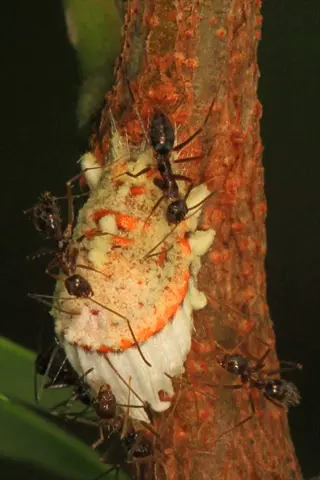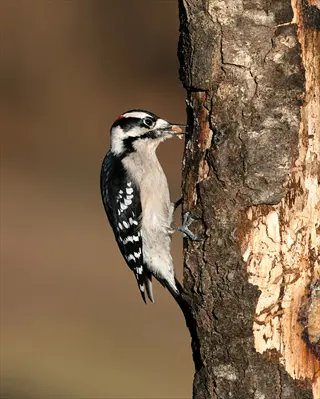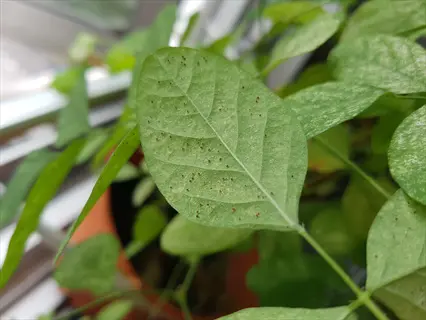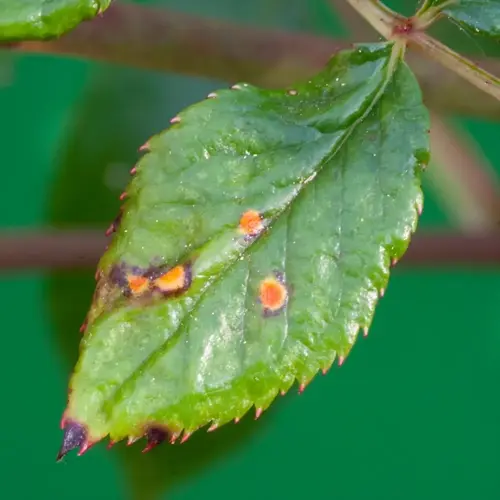Scale Insect Treatment: Save Your Plants Now

Written by
Olivia Mitchell
Reviewed by
Prof. Charles Hartman, Ph.D.Effective scale insect treatment targets crawlers during their mobile stage.
Prevent honeydew and sooty mold by controlling soft scales early.
Combine horticultural oils with biological controls for integrated management.
Avoid broad-spectrum insecticides that kill natural scale predators.
Apply treatments at dawn below 80°F to prevent plant damage.
Monitor plants weekly with tape traps for early infestation signs.
Article Navigation
Scale insects are harmful pests that feed on the sap of your plants. They infest both indoor houseplants and outdoor ornamental plants. If you neglect them, you risk highly damaging your garden. The most scale insect treatment is to catch the pests early. You must act quickly to save your plants.
These small pests will cause irreversible damage if not treated immediately. Leaves will yellow and drop. Branches will die back. Your plants will decline over time. Immediate treatment will help stop this damage. Learn to recognize them before they take over completely.
This guide covers everything you need. We discuss how to identify scale type. We provide step-by-step treatment options that have worked. We add prevention plans. Get lasting protection for your plants with our info.
Life Cycle of Scale Insects
Scale insects have four life stages. Female scale insects produce eggs, which are covered with a protective shell. After hatching, they emerge as active crawlers, which scatter to new plants. After settling on new plants, they become inactive nymphs, and the adult scales reproduce rapidly. Certain species produce a maximum of six generations per year in warm regions.
Seasonal changes radically affect their life cycle. Warm weather permits them to breed continuously, while those in cooler climates must necessarily be retarded to a dormant condition. The nymphs conceal themselves in the crevices of the bark during the cold months of the year and emerge in the spring or late spring. This temporary dormancy prevents severe or abnormal conditions and treatments that might injure them.
Mobility varies greatly in the various stages of development. The crawlers are active in search of new growth to infest. The adults are fixed in place after they have found a suitable location. The soft scales produce honeydew in abundance, which secretes a sticky sap. This attracts ants and the growth of various molds. The armored scales remain sealed up under the waxy covers without moving.
Understanding these patterns helps target treatments. Attack crawlers when they're vulnerable. Apply oils to smother overwintering nymphs. Break the cycle before adults lay eggs. Timing controls infestations effectively.
Egg Stage
- Duration: 3-7 days under optimal conditions (77-86°F/25-30°C)
- Appearance: Tiny, oval-shaped eggs hidden under waxy maternal covers
- Output: Females lay 500+ eggs; some species reproduce asexually
- Vulnerability: Most susceptible to horticultural oils during this phase
Crawler Stage
- Duration: 1-2 days of mobility before settling
- Appearance: Yellow to orange specks (0.5mm) visible via tape traps
- Spread: Wind dispersal or ant transportation to new feeding sites
- Control Window: Critical treatment period for oils/insecticides
Nymph Stage
- Duration: 2-8 weeks depending on species and temperature
- Development: Molt through instars; soft scales retain limited mobility
- Overwintering: Primary survival form on bark in temperate zones
- Feeding Damage: Intensive sap consumption causes leaf yellowing
Adult Stage
- Lifespan: 1-3 months for females; males live <1 week
- Protection: Armored scales develop removable shells; soft scales secrete wax
- Honeydew: Soft scales excrete sticky substance daily; armored scales do not
- Reproduction: Females produce new egg masses every 30-45 days
Reproductive Behavior
- Parthenogenesis: Some species like San Jose scale reproduce without males
- Egg Protection: Waxy covers shield eggs from predators and weather extremes
- Seasonal Peaks: Highest reproduction occurs during warm summer months
- Temperature Influence: Development accelerates above 68°F (20°C)
Damage and Secondary Risks
Scale insects suck the sap directly from your plants. This causes them to become very weak. The leaves turn yellow and fall off prematurely. New growth is stunted. The indoor ficus and the outdoor rose are equally injured. The injury becomes apparent soon unless treated.
The secretion of honeydew causes secondary pest problems. This sticky secretion is found on the excretions of soft scales. It covers the leaves and stems of plants. Sooty mold develops on the honeydew deposit. This black fungus prevents the sun's rays from reaching the green plant. Therefore, the process of photosynthesis is hampered. The plants continue to decline in health.
Ants are attracted to honeydew. Ants protect scales from other insects that might threaten the scale population. The relationship contributes to a greater infestation. Eventually, a dieback will occur. The branches will have sections that become limp. Weak structural integrity will follow. Trees outdoors may snap in the wind, and plants indoors will regularly drop leaves.
Be sure to look for important indicators. Sap loss is signified by yellowing. New shoots that are stunted are a sign of issues. Black sooty mold denotes honeydew. Also, ant trails observed on tree trunks indicate an active infestation. Early detection can help mitigate issues before irreversible damage has occurred.
Sap Depletion
- Mechanism: Piercing mouthparts drain phloem nutrients continuously
- Symptoms: Yellowing leaves, premature leaf drop, stunted growth
- Vulnerable Plants: Citrus, roses, and sago palms show rapid decline
- Long-term Effect: Branch dieback if infestations exceed 50 scales per stem
Growth Inhibition
- Mechanism: Nutrient diversion reduces photosynthesis efficiency by 30-60%
- Symptoms: Smaller leaves, shorter internodes, reduced fruit/flower production
- Recovery Time: Healthy plants need 2-3 months after treatment to rebound
- Critical Threshold: >100 scales per square foot (0.09m²) causes irreversible damage
Honeydew Secretion
- Source: Excreted by soft scales at 0.5-1ml (0.017-0.034 fl oz) per insect daily
- Spread: Drips onto lower leaves and surrounding surfaces
- Attraction: Sugary residue draws ants, wasps, and flies within 24 hours
- Impact: Creates sticky residue on patios, cars, and outdoor furniture
Structural Weakness
- Mechanism: Repeated feeding sites create entry points for pathogens
- Symptoms: Bark cracking, stem lesions, and increased wind damage
- High-Risk Plants: Older trees and woody shrubs with thin bark
- Prevention: Maintain plant vigor through proper irrigation and nutrition
Flower/Fruit Abortion
- Mechanism: Nutrient diversion halts reproductive development
- Symptoms: Premature dropping of buds and immature fruits
- Crop Impact: Citrus, apple, and stone fruit yields reduced by 40-70%
- Timing: Most critical during early fruit set in spring

Sooty Mold
- Development: Black fungus grows on honeydew within 48 hours
- Impact: Blocks 70-90% of sunlight from leaves
- Treatment: Washable with soapy water after scale elimination
- Vulnerable Plants: Citrus, gardenias, and ornamental trees

Ant Colonies
- Symbiosis: Ants protect scales from predators for honeydew access
- Interference: Disrupts biological control by ladybugs and parasitic wasps
- Management: Requires simultaneous ant baiting with scale treatment
- Nest Locations: Often in soil within 10 feet (3 meters) of infested plants

Weakened Disease Resistance
- Pathway: Nutrient stress compromises plant immune responses
- Common Follow-up Issues: Powdery mildew, root rot, canker diseases
- Recovery: Balanced fertilizer after treatment reduces susceptibility
- High-Risk Plants: Roses, fruit trees, and stressed ornamentals

Bird Damage
- Cause: Birds seeking scale insects damage plant surfaces
- Impact: Bark stripping on trees and stem breakage on shrubs
- Prevention: Physical barriers like netting during infestation periods
- Common Culprits: Woodpeckers and nuthatches in woody plants

Secondary Pest Outbreaks
- Trigger: Pesticides that kill natural predators
- Common Pests: Spider mites, aphids, and whiteflies proliferate
- Prevention: Use targeted treatments that preserve beneficial insects
- Monitoring: Check for new pests 1-2 weeks after scale treatment
Prevention and Monitoring
Prevent scale infestations before they start. Check new plants carefully before introducing them to your environment. Quarantine them for 2 weeks. Keep your garden free of debris. Remove any fallen leaves and debris. This minimizes scales hiding in the rubble while they are overwintering.
Use simple monitoring techniques to detect early signs. Wrap double-sided sticky tape around the stems. Check weekly for trapped crawlers. Place honeydew detection cards under plants you suspect are infested. Count the number of sticky drops found. More than fifty indicates serious trouble.
Adapt your prevention plan with the seasons. Use dormant oil sprays for the winter months. Treat bark where nymphs are hiding, and release lacewings in the spring after the frost has passed. Use neem oil during the summer, applied at dawn. Trim all infested branches each fall.
Whenever feasible, opt for chemical-free techniques. Leave the sticky ant barrier on the trunks of the trees all the time. Encourage natural predators, such as ladybugs. Water the plant correctly without overwatering. Healthy plants can better resist the scales. Prevention is better than a cure.
Tape Traps
- Method: Wrap double-sided sticky tape around infested branches
- Purpose: Catches mobile crawlers to track population peaks
- Frequency: Check weekly during spring/summer growing seasons
- Effectiveness: 90% accuracy in predicting crawler emergence timing
Honeydew Monitoring
- Tools: Water-sensitive paper showing blue dots upon contact
- Placement: Position under suspected infestation areas
- Measurement: Count drops over 4-hour morning periods weekly
- Threshold: >50 drops indicates severe soft scale infestation
Visual Inspections
- Focus Areas: Undersides of leaves, bark crevices, new growth
- Tools: 10x magnifying glass for nymph detection
- Frequency: Biweekly checks during active growing seasons
- Indicator: White waxy egg masses signal imminent hatching
Ant Activity Tracking
- Observation: Watch for ant trails moving up plant trunks
- Significance: Ants protect scales for honeydew access
- Control: Apply Tanglefoot sticky barriers to disrupt access
- Timing: Inspect trunks monthly during warm months
Plant Health Audits
- Parameters: Document leaf color, growth rate, dieback patterns
- Baseline: Compare against healthy plants of same species
- Technology: Use free apps like PlantSnap for symptom ID
- Intervention: Trigger treatment at 20% vigor reduction
Integrated Treatment Methods
Non-chemical treatments should be considered first for safety. Manually remove scales with cotton swabs dipped in rubbing alcohol. Apply horticultural oils early in the morning when the temperature is cool. These work best in spring or fall. They provide 70-90% control against crawlers without harming beneficial insects.
Next, apply biological controls. Release the ladybugs or lacewings in early summer, and when temperatures exceed 60 degrees. Use 500 predators for each small tree. This method is 85% effective if you kill the ants first, and is an effective natural method of preventing future outbreaks.
Use pesticides only in cases of emergency, applying systemic agents such as imidacloprid early in the morning. Soft scale may be controlled by soil drenches, armored scale by trunk sprays, both of which are effective to 95 percent. Avoid applying sprays to edible plants before harvesting time.
Always use caution. Do not spray while flowering. Do not treat above 90 degrees, or you will burn the leaf. The treatment methods can be combined for severe infestations. Your timing of applications dictates success with different scales.
Manual Removal
- Procedure: Scrub scales with alcohol-dipped swabs or soft brush
- Best For: Light infestations on indoor plants and small shrubs
- Timing: Any season; follow with shower rinse
- Effectiveness: 70% removal rate when combined with rinsing
Horticultural Oils
- Products: Bonide All Seasons, Monterey Horticultural Oil
- Application: Spray thoroughly until runoff (cover leaf undersides)
- Timing: Dormant season or within 48 hours of crawler emergence
- Precaution: Avoid use above 90°F (32°C) or during drought stress
Biological Controls
- Agents: Release Chilocorus ladybugs or lacewing larvae
- Timing: Spring/early summer when temperatures exceed 60°F (15°C)
- Rate: 500-1000 predators per small tree or 10x10ft garden area
- Effectiveness: 85% control within 6 weeks if ants are managed
Nematode Treatments
- Species: Steinernema feltiae for soil-dwelling scales
- Application: Drench soil at rate of 1 million nematodes per 10 sq ft
- Conditions: Apply when soil is moist and >55°F (13°C)
- Frequency: Repeat every 2 weeks for heavy infestations
Systemic Insecticides
- For Soft Scales: Imidacloprid soil drench (avoid flowering periods)
- For Armored Scales: Dinotefuran trunk spray or bark application
- Timing: Early morning applications in spring/fall
- Caution: Never use on edible plants within 30 days of harvest
Botanical Sprays
- Options: Neem oil, insecticidal soap, or pyrethrin solutions
- Coverage: Spray every surface including bark crevices
- Frequency: Apply every 7 days for 3 consecutive weeks
- Safety: Use at dawn/dusk to minimize pollinator exposure
Common Mistakes to Avoid
Avoid using insecticides on flowering plants. They will kill important pollinators, such as bees. If insecticides are applied, you reduce your yield potential from your fruit trees by 40-60%. Instead, treat the plants directly two weeks before buds break. You can effectively control scales and protect nature as well.
Partial treatment of the sprayed surface allows for prompt reinfestation. The armored scales beneath the leaves are missed. They return in a short time. Always use adjustable nozzles on the spray equipment and spray until the runoff covers all surfaces. Pay particular heed to the crevices of the bark and the underside of the leaves.
If you fail to treat ants, the treatment will undoubtedly fail. Ants protect the scales to feed on honeydew, and the number of scales can triple after you spray them. Apply sticky barriers, such as Tanglefoot, to tree trunks first. During a treatment window, it is recommended to inspect the area weekly for ants.
Broad-spectrum insecticides will only cause more problems. These products kill natural enemies, such as ladybugs and parasitic wasps. The spider mite outbreak will happen two weeks later. Consider switching to a product specifically targeted for the pests, such as neem oil. You will eliminate scales but protect the beneficial insects.
Spraying During Flowering
- Consequence: Kills pollinators like bees and butterflies
- Secondary Effect: Reduces fruit set by 40-60% in edible plants
- Solution: Treat plants 2 weeks before flowering or after petal fall
- Vulnerable Plants: Citrus, roses, and fruit trees
Incomplete Spray Coverage
- Consequence: Misses armored scales hidden under leaves/bark
- Secondary Effect: Rapid reinfestation within 2-3 weeks
- Solution: Use sprayers with adjustable nozzles for full saturation
- Target Areas: Undersides of leaves and bark crevices
Ignoring Ant Control
- Consequence: Ants protect scales from natural predators
- Secondary Effect: Scales rebound 3x faster after treatment
- Solution: Apply sticky barriers (Tanglefoot) to trunks first
- Monitoring: Check for ant trails weekly during treatment
Overusing Broad-Spectrum Insecticides
- Consequence: Kills beneficial ladybugs and parasitic wasps
- Secondary Effect: Spider mite outbreaks within 10-14 days
- Solution: Use targeted treatments like horticultural oils
- High-Risk Products: Carbaryl, malathion, permethrin
Treating During Extreme Temperatures
- Consequence: Causes phytotoxicity (leaf burn) above 90°F (32°C)
- Secondary Effect: Weakens plant defenses against reinfestation
- Solution: Spray at dawn when temps are below 80°F (27°C)
- Warning: Avoid treatment during drought stress conditions
Skipping Follow-Up Applications
- Consequence: Misses eggs and nymphs that hatch later
- Secondary Effect: Requires restarting treatment after 6 weeks
- Solution: Reapply treatments at 7-10 day intervals
- Monitoring: Use tape traps to detect new crawler waves
5 Common Myths
Honeydew is secreted by all scales, and it leads to sooty mold of plants.
Only the soft scales produce honeydew and the armored scale feeds in a way that there is no excretion of the sugary material. The soft scales feed on the plant by penetrating the phloem vessels and the boiled scale avoids that by entering the cell contents of the plant. This explains the appearance of sooty mold, which is only associated with soft scales. An understanding of the occurrence of sooty mold and the relation of the soft scales therewith prevents the man who has the soft scales from burning his trees, treating them for honeydew, and suffering an unnecessary and excessive expense from the applying of insecticides.
Scale insects are found only on unhealthy or stressed plants, and therefore by only introducing health to the plants, the scales are removed.
Scale insects infest both fully healthy plants as well as plants that are stressed. One example of these is the euonymus scale, which infests healthy evergreens alike. Although the stressed plants die sooner, there is plenty of sap in the healthy ones for the scales to reproduce their young. In all cases integrated measures should be used, including fertilizing the plants with horticultural oils and biological controls, to rid the plant of them whether it be vigorous or stressed. Examples of these chemical signals are used by the scales in finding their hosts, rather than weaknesses of the injured plant.
Natural methods like neem oil don't work on scales due to their protective shells.
Horticultural oils penetrate scale shells by suffocation and disrupting cell membranes, achieving up to 90% efficacy when timed to crawler emergence. Neem's azadirachtin compounds inhibit molting hormones during vulnerable nymph stages. Proper application, thorough coating of all surfaces at temperatures below 90°F (32C), ensures oil contact with breathing pores beneath the waxy covering, making natural methods highly effective against all life stages.
Scales can't spread to nearby plants because adult females are immobile.
Mobile crawlers (juvenile scales) migrate via wind, ant transportation, or passive transfer on gardening tools within 48 hours of hatching. A single female produces 500+ crawlers that can colonize plants 20 feet (6 meters) away. This mobility necessitates quarantine of infested plants and perimeter treatments. Wind dispersal observations confirm crawlers travel up to 1/4 mile (400 meters) in optimal conditions.
Scale damage is always irreversible, requiring removal of infested plants.
Most plants fully recover with proper treatment: prune dead wood, apply balanced fertilizer, and maintain optimal watering. Regrowth occurs within 2-3 months as scales don't transmit systemic diseases. Exceptions involve rare cases like cycad scale infestations killing ancient sago palms. Early intervention preserves 95% of plants, with citrus and ornamentals showing remarkable resilience after scale elimination through new leaf production.
Conclusion
Identification at an early stage is key to success in controlling the scale insect pest. End your conversations about scale insects when they are identifiable as crawlers. Only use control strategies that incorporate a variety of approaches, including mechanical removal and utilization of natural enemies. This will end the infestation quickly. Plants will fully recover after the treatment cycle with little effort.
Prevention trumps treatment. Use seasonal monitoring such as tape traps. Use dormant oils before winter ends. These actions will eliminate scales before they begin. Healthy plants are less susceptible to pests than stressed ones.
Routine inspections safeguard your garden for the long term. Inspect the leaves of your plants every week during the active growing season. Look for any yellowing, wilting, or sticky honeydew. Address small issues before they grow rapidly. Maintaining a consistent routine will ensure that the plants continue to thrive for years to come.
Start protecting your plants today. Check them for scale signs immediately. Apply prevention methods this week. Share these strategies with fellow gardeners. Your green space deserves this defense.
External Sources
Frequently Asked Questions
What's the most effective permanent solution for scale insects?
Permanent control requires integrated management: target crawlers with horticultural oils during emergence, combine with biological controls like ladybugs, and maintain ant barriers. Consistently monitor with tape traps and reapply treatments every 7-10 days for 3 weeks to break their life cycle.
Which insecticides work best against different scale types?
Treatment effectiveness varies by scale species:
- Soft scales: Use systemic imidacloprid drenches for honeydew producers
- Armored scales: Apply dinotefuran trunk sprays to penetrate shells
- All types: Horticultural oils during crawler stage (most vulnerable)
Do scale insects transfer between plants?
Yes, newly hatched crawlers actively spread through wind, animal transfer, or gardening tools. They can travel significant distances to colonize nearby plants within hours. Quarantine infested specimens immediately and treat perimeter plants preventatively during peak activity seasons.
Is vinegar effective against scale infestations?
Vinegar solutions provide limited contact kill but fail against eggs or armored shells. They risk plant damage without addressing root causes. Proven alternatives like neem oil or insecticidal soaps offer safer, more comprehensive control when applied correctly.
When are scale insects most active annually?
Peak activity aligns with temperature thresholds:
- Spring: Crawler emergence begins above 60°F (15°C)
- Summer: Maximum reproduction during warm months
- Fall: Egg laying before overwintering
- Winter: Dormancy except in heated indoor gardens
Can dish soap solutions eliminate scales?
Dish soaps disrupt cell membranes but require precise formulation:
- Use only pure liquid soaps without degreasers
- Apply at dawn to avoid leaf burn
- Must completely coat insects for effectiveness
- Reapply frequently due to low residual action
What oils effectively control scale insects?
Horticultural oils suffocate scales through physical action:
- Dormant oils: Heavy applications on woody plants in winter
- Summer oils: Lightweight neem or canola for growing season
- Essential oils: Rosemary or peppermint as repellents (supplementary only)
How long does complete scale eradication take?
Timelines vary by infestation severity:
- Light cases: 2-3 treatments over 3 weeks
- Moderate infestations: 4-6 weeks with biological controls
- Severe outbreaks: 2-3 months including plant recovery
- Ongoing monitoring prevents reinfestation indefinitely
Are homemade soap sprays plant-safe?
Soap sprays can cause phytotoxicity if misused. Always test on single leaves first and avoid application during high heat or drought. Proper dilution and dawn/dusk timing minimize risks while maximizing effectiveness against soft-bodied pests.
How prevent insect damage without chemicals?
Implement proactive cultural controls:
- Release predator insects (ladybugs/lacewings) early season
- Apply sticky trunk barriers to disrupt ant symbiosis
- Prune infested branches before egg hatch
- Use row covers for high-value plants

